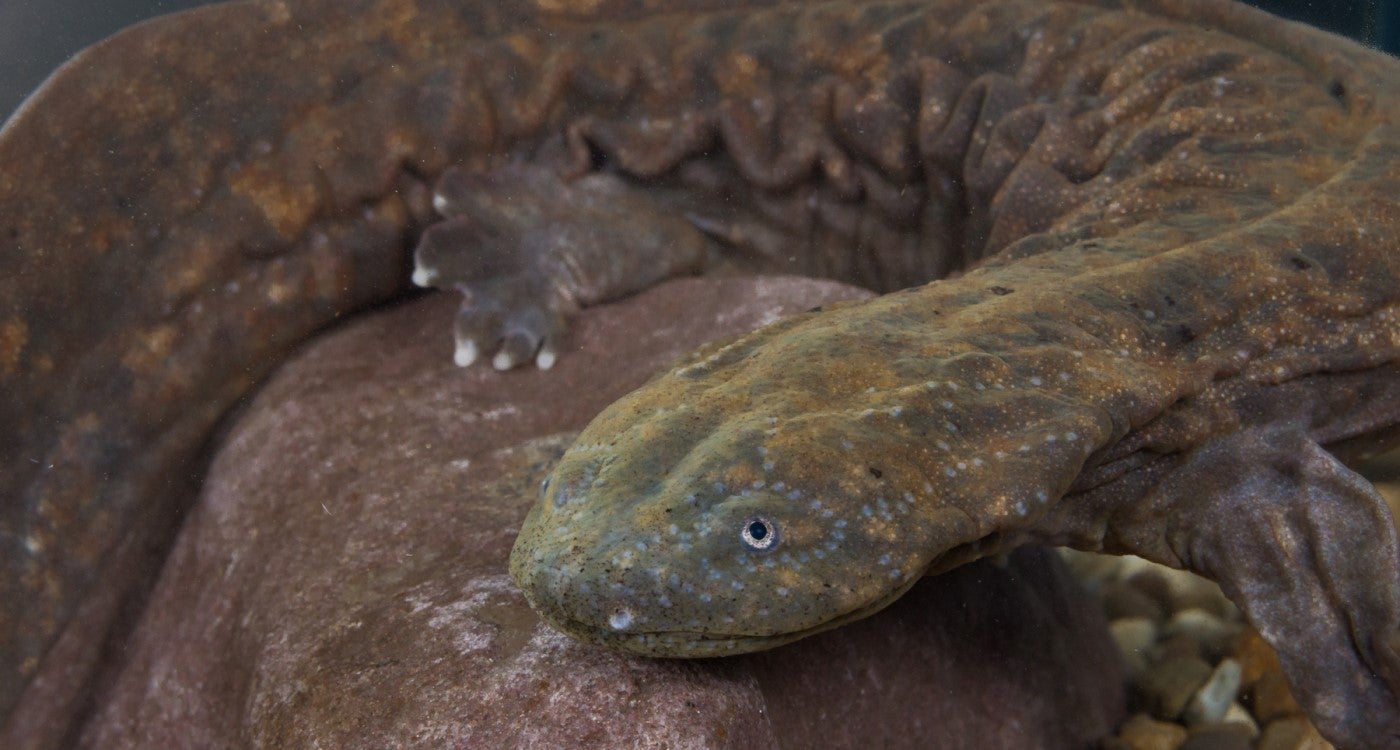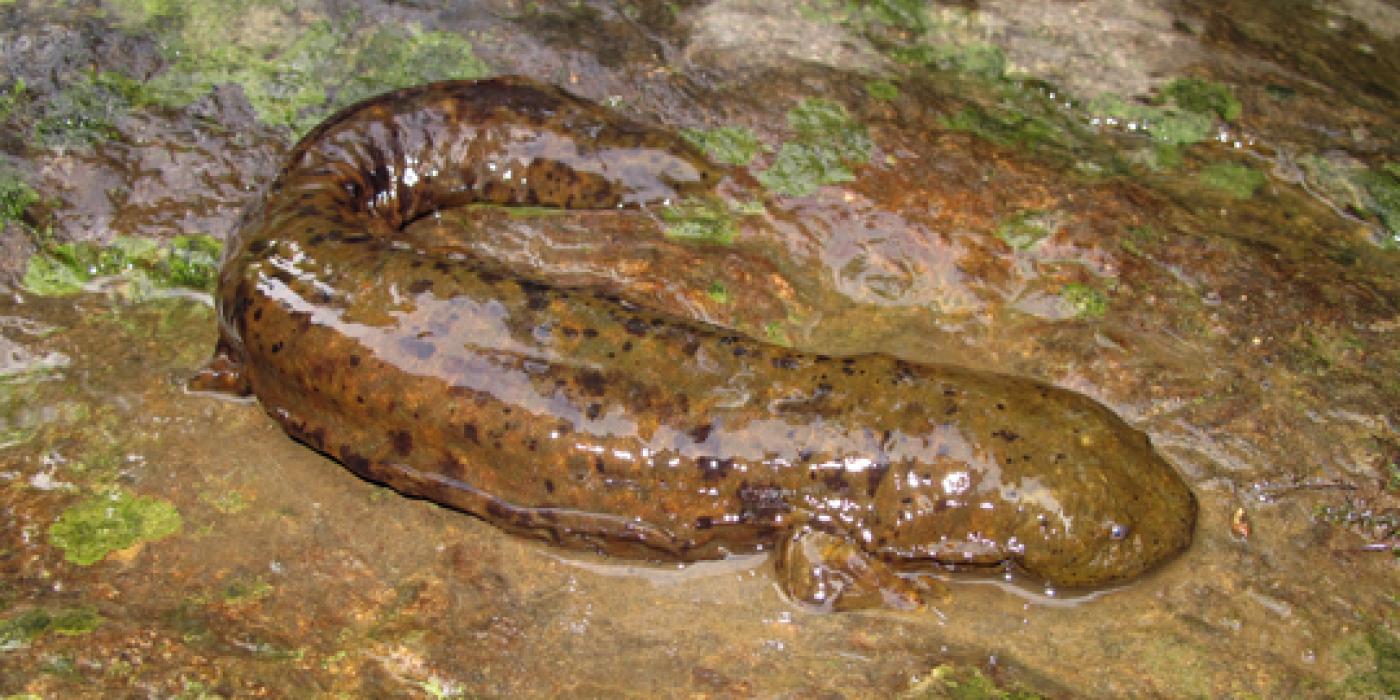How to Care for Hellbenders

Swift waters rush us into Salamander Saturday, celebrated on the first Saturday of May! Check out how Reptile Discovery Center animal keeper, Matt Neff, cares for and studies the largest salamander in the Americas: the hellbender.

Hellbender, snot otter and devil dog are just a few names for the Americas’ largest salamander, Cryptobranchus alleganiensis. With such unique (and eyebrow-raising) names, it’s not surprising these salamanders attract some attention!
Subjectively, hellbenders are not the most beautiful salamanders. However, their appearance is practical for their survival. Hellbenders’ grayish-brown skin helps them camouflage among the rocks and mud at the bottom of their native streams. As the water ripples on the surface, their wrinkles create the illusion that they are moving, even though they are actually sitting very still.
Get a closer look at these aquatic salamanders in this encounter:
As mentioned in the video, hellbenders are an indicator of water quality. These salamanders need swift, cool and clean water in order to survive. The streams hellbenders live in look similar to the streams in Rock Creek Park in Washington, D.C. However, you won’t find any hellbenders in the D.C. streams. The key to hellbender habitat is elevation!
In the Appalachian Mountains, where hellbenders are from, the streams consist of melted snow from the mountains. So, the water can get quite cold! Their exhibit mimics the natural water flow and temperature of the streams with powerful pumps and chillers.
Light is also an important component to many of our animals’ habitats. To mimic day length, we have an astronomical timer which automatically adjusts the lights in hellbenders’ exhibit to reflect the conditions outside. For example, decreasing day light signals winter. The animals will adjust how much they eat and how active they are to match their natural behaviors during that time of year.

While we are not breeding hellbenders at the Zoo, it is important for the animals who are sexually mature to exhibit their natural breeding season behaviors. In the wild, a male would excavate a large nest chamber beneath a rock where a female could lay eggs. He would then safeguard the eggs by himself until they hatch. At the Zoo, the males become more active as they seek out females and try to defend their habitat from other males.
Hellbenders have incredible senses. They have adapted to living in murky stream water, so their eyesight is not great. However, they can sense and smell each other if their tanks are connected to the same pump system.
Before the hellbenders at the Zoo became sexually mature, we conducted a few behavioral research projects. One tested their olfactory senses. We placed a single drop of earthworm extract in their 30-gallon tank to see if they would react to the smell of their prey. And they did!

Hellbenders aren’t the only amphibian that may be living in your backyard! When I was a kid, hearing and seeing spring peepers (a type of chorus frog) calling near my house inspired me to study reptiles and amphibians. If you are interested in hellbenders, check out some of the other smaller, more cryptic amphibians that live at your local zoo. Not only will you have the opportunity to meet and learn about these awesome amphibians, but also you can learn more about the steps you can take to save them and be a true conservation hero!
Plan your visit today to get an up-close look at hellbenders and other salamanders in the Reptile Discovery Center!
Looking to explore how to care for more of our animals with our keepers? Check out a variety of stories from all over Smithsonian’s National Zoo and Conservation Biology Institute here.
Related Species:

